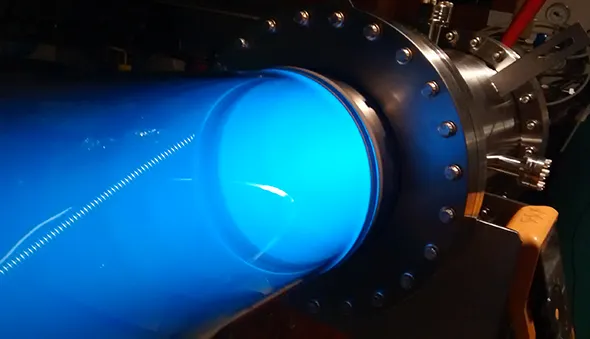
A Bright Bluish Glow
A large glass chamber was recently installed on SSX in preparation for the development of the plasma pulser coils. A helium glow discharge gives off the characteristic bluish color.
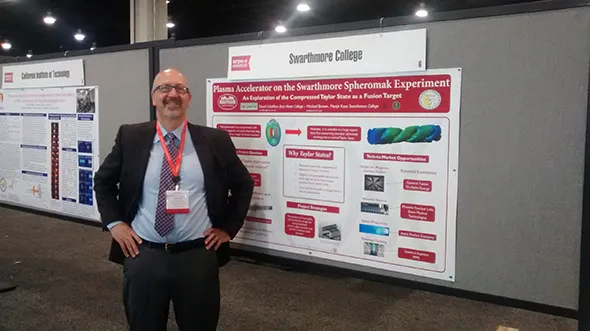
Conference of Cutting Edge Energy
Profs Brown and Schaffner traveled to Washington, DC, to present SSX work at the annual ARPA-E Summit, a gathering of researchers looking at cutting edge energy technology.
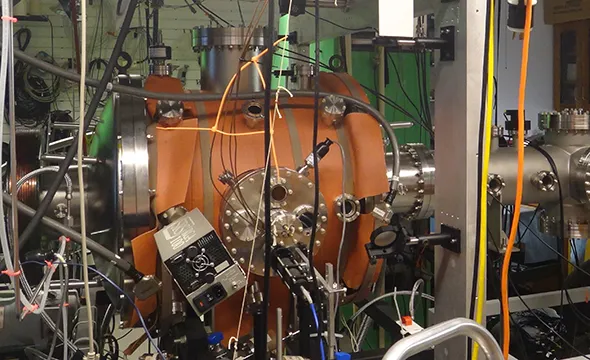
SSX wins ARPA-E Contract
Swarthmore has received a portion of the $30 million ALPHA projected established by ARPA-E to study the prospects of a twisted Taylor state as a target for a fusion energy reactor. Read more...
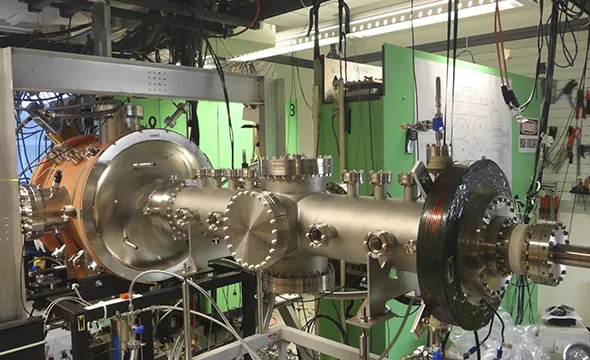
SSX Wind Tunnel Extension
Turbulence and plasma research is conducted inside the Swarthmore Spheromak Experiment wind tunnel.
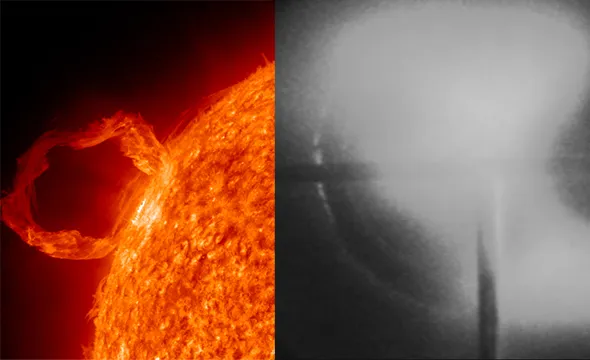
Plumes of Plasma
The magnetized plumes of plasma produced inside SSX (right image) are similar to coronal loops produced on the surface of the sun (left image).
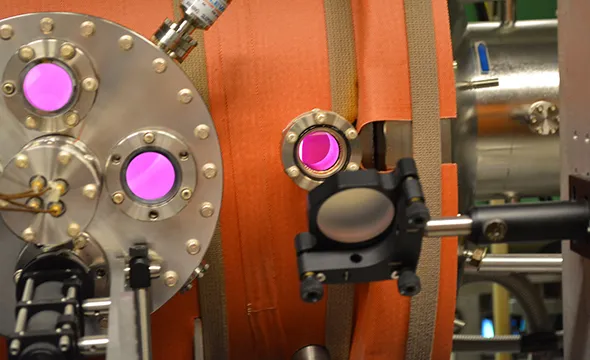
A Plasma Pulse
Over 100,000 Amperes of current is driven through Hydrogen gas to create the bright flash of plasma.
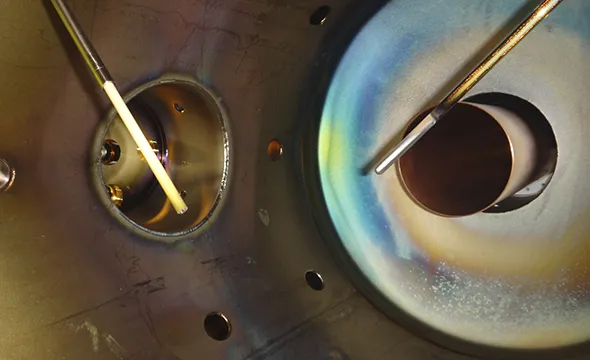
Probing Plasma Turbulence
The magnetic probe and Langmuir probe are ready to measure fluctuations when plasma emerges from the tunnel
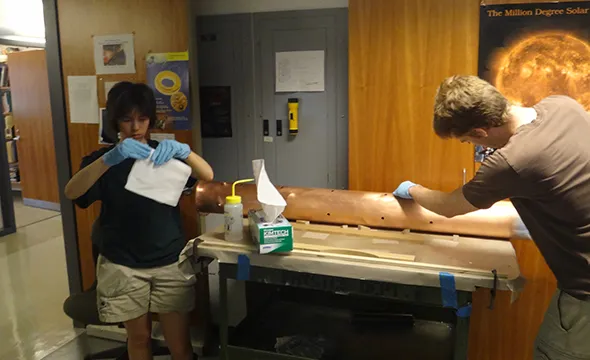
All Hands on Deck
Swarthmore Students Emily Hudson '17 and Peter Weck '15 help clean the copper wind tunnel before it is inserted into the SSX chamber.
A Bright Bluish Glow
A large glass chamber was recently installed on SSX in preparation for the development of the plasma pulser coils. A helium glow discharge gives off the characteristic bluish color.



